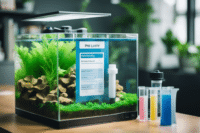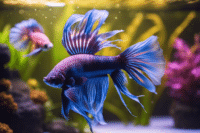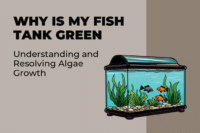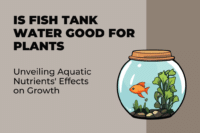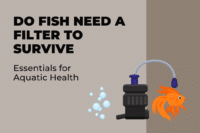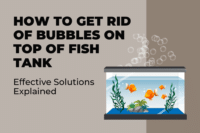Curious about adding a splash of diversity to your aquarium by introducing fish into your turtle’s tank? Wondering if they can coexist peacefully or if you’ll end up fishing out your scaly friends one by one? Yes, turtles and fish can live together, but you need the right setup and species compatibility to make it work.
Choosing the right fish is crucial. Small, agile fish like guppies, minnows, and tetras often share space well with turtles due to their speed and ability to hide. On the other hand, larger or less agile fish might not fare so well, as turtles have a natural instinct to hunt and eat slower-moving companions.
Creating a balanced habitat requires more than just picking the right fish. You’ll need to ensure your tank is large enough, possibly 20 gallons or more, to give both your pets the space they need. Additionally, providing plenty of hiding spots and careful monitoring can help foster a peaceful coexistence.
Key Takeaways
- Turtles and fish can live together with the right setup.
- Choose small, agile fish like guppies, minnows, and tetras.
- A large tank with hiding spots is essential for harmony.
Choosing Compatible Fish and Turtle Species
When choosing which fish to keep with turtles, you have to think about a few important things. You need to understand your turtle’s behavior, pick fish that can live peacefully with turtles, and know which fish to avoid.
Understanding Turtle Behavior
Turtle behavior is a key part of selecting compatible fish. Aquatic turtles, like the red-eared slider and musk turtles, are often more active and may chase fish. It’s crucial to know that some turtles, such as snapping turtles, are more aggressive and eat their tank mates.
You should also consider the size of your turtle. Larger turtles are more likely to see fish as food. Knowing the behavior of your specific turtle species helps in choosing fish that won’t get easily stressed or eaten.
Fish That Can Coexist with Turtles
There are several fish species that can live with turtles. Tetras and danios are great options because they are small, fast, and good at hiding. Mollies and platies are colorful and relatively hardy, making them suitable tank mates.
Other good choices include plecos and cichlids. Plecos help keep the tank clean by eating algae. Cichlids, though a bit more territorial, are usually quick enough to stay safe. Just ensure the tank is large enough for all the inhabitants, typically 20 gallons or more.
Here’s a quick list of fish species that can coexist with turtles:
- Mollies
- Platies
- Neon Tetra
- Guppies
- Danios
- Plecos
- Cichlids
Fish to Avoid
Some fish are just not a good match for turtles. Goldfish might seem like an easy choice, but turtles often see them as a snack. Betta fish can be aggressive and might nip at turtle’s legs and tails.
Pictus catfish and other slow-moving or bottom-dwelling fish can be easy targets for turtles. Also, avoid any very small or delicate fish species that can’t handle the active environment turtles create. Remember, the goal is to prevent stress and ensure safety for all tank mates.
Fish to avoid include:
- Goldfish
- Betta Fish
- Pictus Catfish
- Slow-moving fish
- Small, delicate species
Creating a Suitable Habitat for Turtles and Fish
When housing turtles and fish together, creating a balanced and comfortable environment for both is key. This involves considerations such as tank size, water quality, and dietary needs, topped off with appropriate decorations and hiding spots.
Tank Size and Setup
Size matters for your aquarium setup. For a turtle tank, you’ll need at least 30 to 50 gallons. Larger turtles or multiple turtle tank mates might require even more space. Make sure there’s enough swimming area for the fish too. Consider adding a UVB light to mimic natural sunlight, which turtles need for healthy shells.
Maintain a sturdy tank lid. Turtles can be escape artists, and a secure lid prevents accidents. Think of the tank as a mini-ecosystem. Adequate space ensures less stress and a healthier environment for both turtles and fish.
Water Quality and Temperature
Keeping water conditions optimal is crucial. Use a robust filtration system to handle the bioload from both turtles and fish. Aim for a water temperature between 75 to 80°F. Cold-blooded animals like turtles depend on external temperatures to regulate their body heat.
Monitor the water’s pH levels, keeping it around 6.5 to 7.5. Regularly check for ammonia, nitrates, and nitrites using a water testing kit. Clean the tank and change a portion of the water weekly to maintain a healthy balance. Healthy water means healthy pets.
Diet and Feeding Requirements
Diet can be tricky when mixing species. Turtles are often omnivores — they eat both plant and animal matter. Offer them a varied diet including pellets, leafy greens, and occasional protein like insects or small fish.
Fish have their own dietary needs. Some enjoy flakes or pellets, while others might need live or frozen foods. Feed them in smaller amounts and more frequently. Be cautious because leftover food can pollute the water and increase the work for your filtration system. Balance is the key to preventing overfeeding and maintaining water quality.
Decoration and Hiding Places
Decorations are not just for looks; they provide essential hiding places for your fish. Use rocks, driftwood, and aquatic plants to create secluded spots. Fish use these hideouts to escape aggressive turtles or other tank mates.
Make sure decorations are turtle-proof — turtles can be quite strong and might topple or break weak structures. Secure any loose items to avoid accidents. These hiding places reduce stress for the fish and create a more natural and engaging habitat for everyone in the tank.



